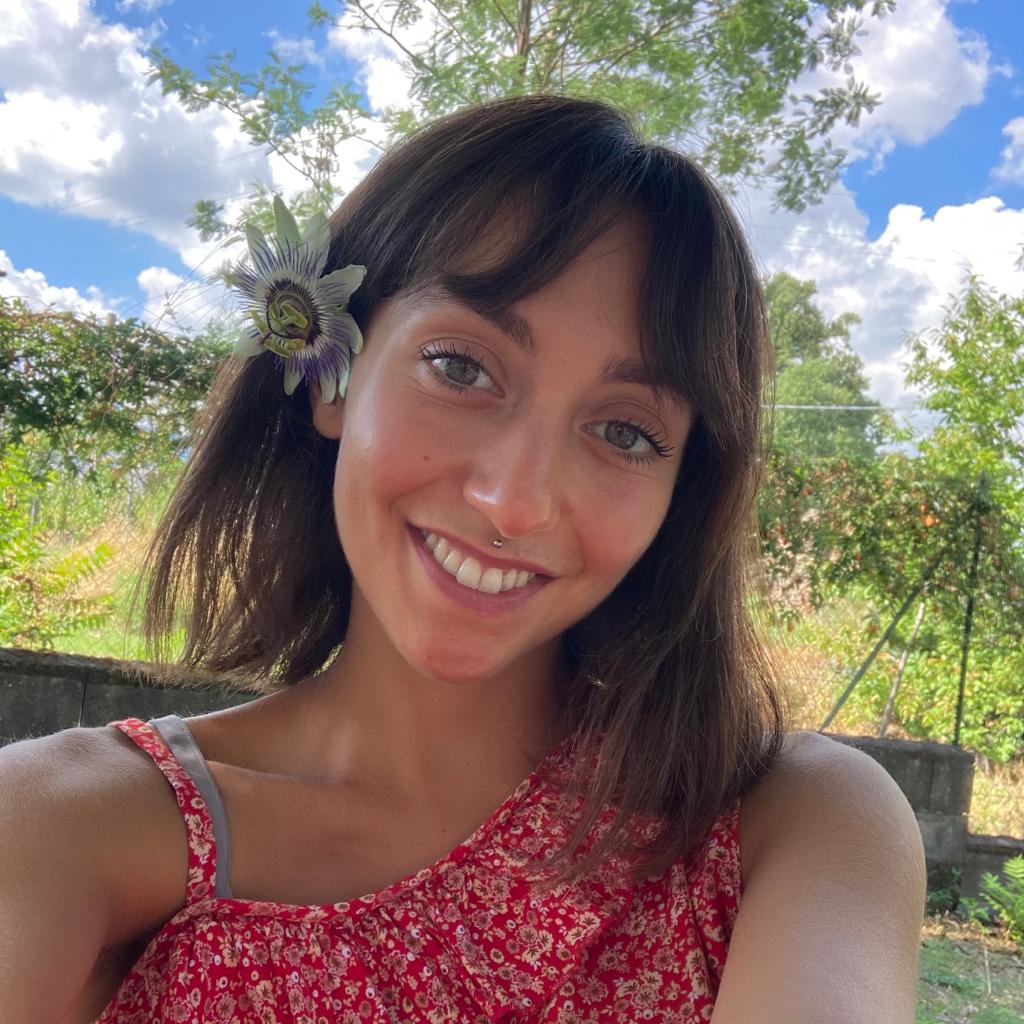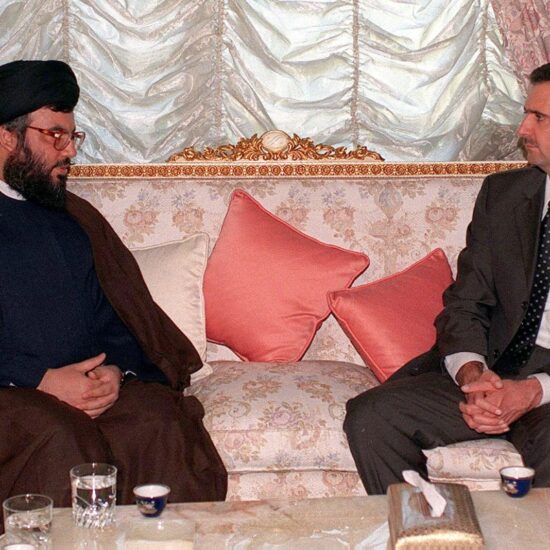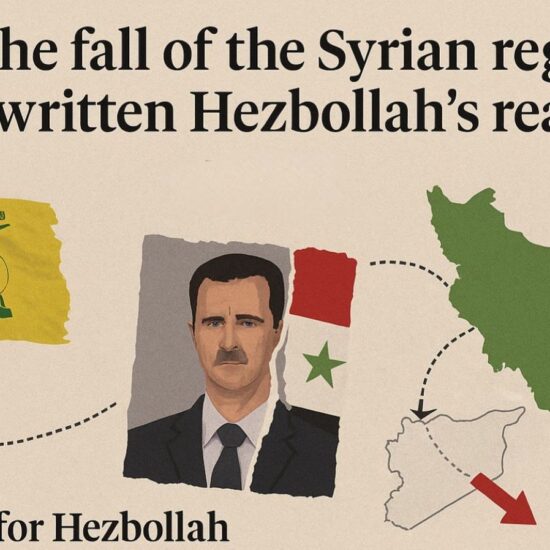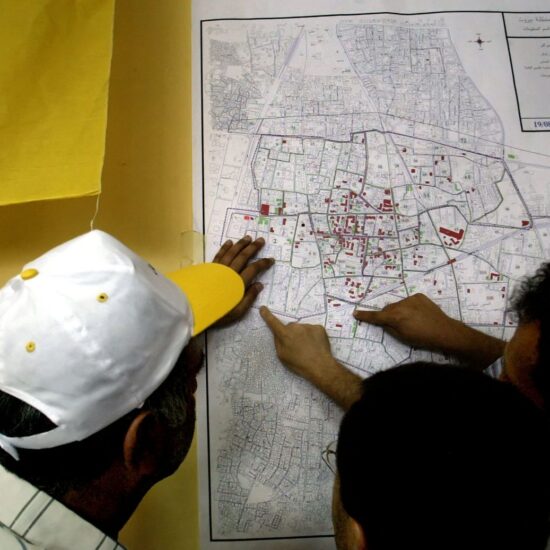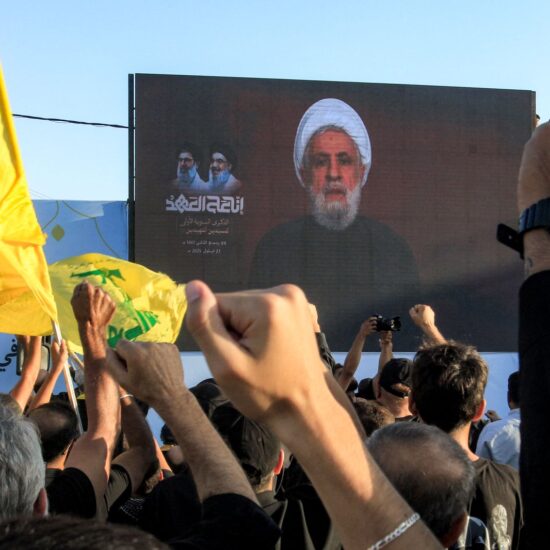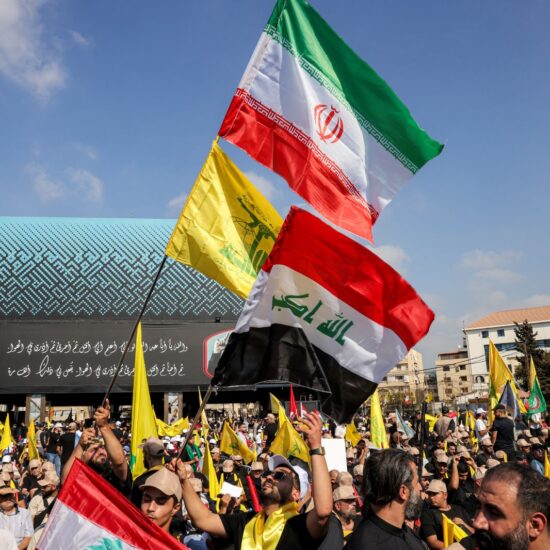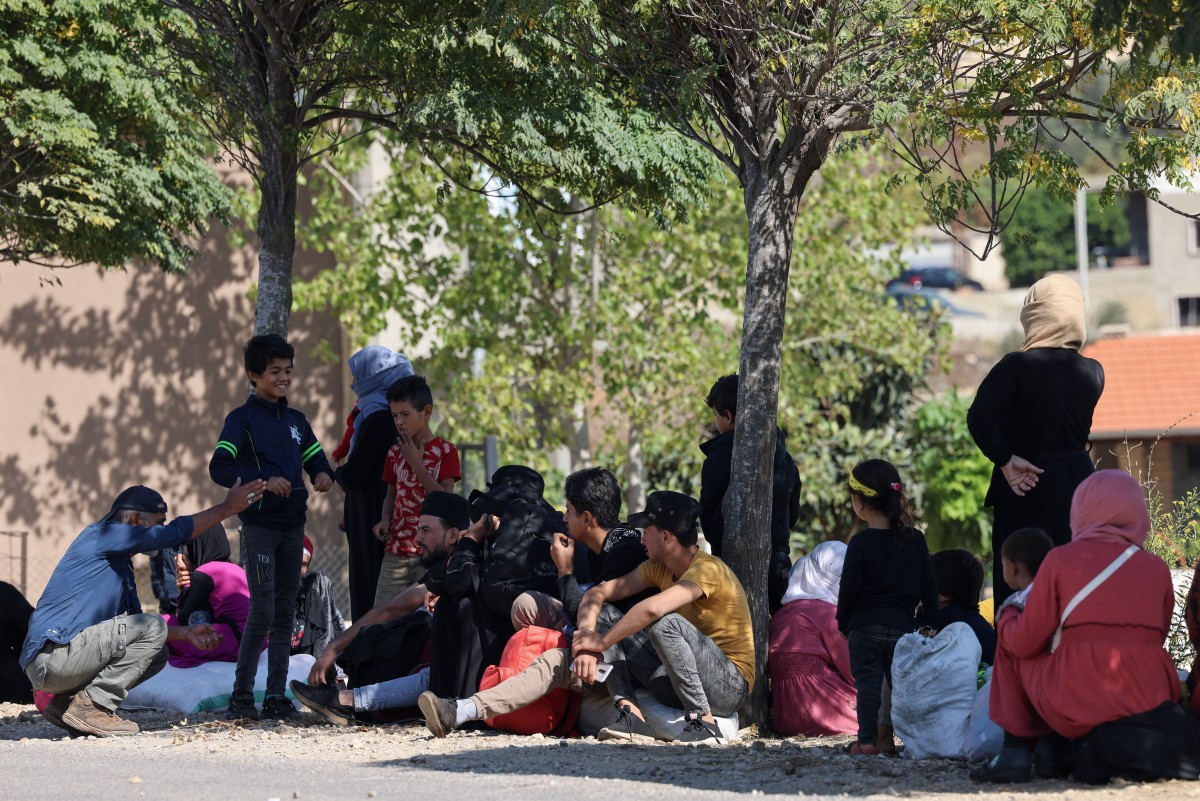
As violence on Lebanon's southern border intensifies, two million Syrian refugees in the country are at risk of turning into “guns for hire”
“If you ask me what we should fear, it is not to die in war, but to face another displacement,” Ahmad*, a Syrian refugee in Lebanon since the outbreak of the civil war in 2011, told NOW. He fled, like many of the approximately two million refugees in the country, the compulsory military service that the government of Bashar al-Assad imposes on men between 18 and 42, as well as the violent repression of any dissent by the regime.
His mother Fatima*, who remained in Homs together with the women, the children, and the elderly of the family, has already rented three apartments to displaced Lebanese fleeing the consequences of a war that is yet to be announced. While an increasingly active involvement of Lebanon is feared, in the south the conflict has already exploded, causing, since 7 October, 14 civilian victims and 65 among Hezbollah militiamen.
At a time when the Lebanese civil society has collected more than 9 thousand signatures to avoid direct intervention in the war between Hamas and Israel, those who could have already left. More than 25,000 Lebanese citizens have been displaced from their villages and relocated to the rest of Lebanon, according to the International Organisation for Migration, while many others, carrying a second nationality or visitor visa, temporarily moved abroad. It appears, though, there is little that many of the Syrian refugees currently residing in the Lebanese territory would fear more than a further displacement.
This is the paradox of Lebanon, a country that covers little more than 10,000 square kilometres, which can be crossed from north to south in a matter of hours, and which nevertheless bears witness to extremely different socio-political scenarios; which is surrounded by barbed, when not bloody, borders separating it from two countries – Israel and Syria – historically adversaries; which has suffered occupation by both, and whose policies influence its delicate internal balances: politico-military, as the recent and ongoing Israeli aggression of the Gaza Strip and Palestinian territories is proving; and demographic, given the exponential influx of Syrian refugees over the last decade. Two million, according to the numbers of Lebanese security agencies, although the UN Refugee Agency has documented only 840,000.
Ninety percent of Syrian refugees in Lebanon, according to UNHCR data, live below the poverty line; a significant portion of these lack legal documents. In addition to being subjected to forced deportations across the border, which have increased exponentially since 1 January 2023, they are subjected to constant racist threats and violence, often blamed by part of the Lebanese society for the severe economic crisis that began four years ago, leading the national currency to lose more than 98 percent of its value and two out of three people to live in poverty.
Despite the state of terror in which Syrian refugees live in Lebanon, however, for most, returning to Syria is not an option. Between the possible death of staying and the certain death of returning, there is no doubt what to choose.
To flee or not to flee
The border from Syria to Lebanon, for Syrians, is not one that can be easily crossed: the same border that the Lebanese are allowed to cross legally and without needing a visa, for Syrians in exile can cost them their lives. By fleeing compulsory military conscription and the regime’s repression of dissent, they have become dissidents: for them to return would mean facing arbitrary detention, abduction, torture and death, as Human Rights Watch documented between 2017 and 2021.
In Tripoli, far from the southern border and outside Hezbollah’s region of influence, where the current conflict is less evident and rockets and bombings take the form of news learned online, Khaled* and Waleed* spend their days constantly reinventing themselves, selling second-hand clothes at the Sunday market and avoiding talking about the war. “You never know who to trust. We, the Syrians, have learned it on our own skin,” Khaled told NOW, breaking his tacit promise of confidentiality and answering our questions.
When asked where they would go if they could travel to any country, they answered, without doubts, “to Gaza.” To who is the worst enemy, without hesitation: “Bashar al-Assad”. To how and where they see themselves in five years’ time, both: “Martyrs, in Palestine.” Ahmad warned me that this is how most Syrians would respond. We take it as a bet to see how others react to the same question.
Khaled was born in Yarmouk, a Palestinian refugee camp on the outskirts of Damascus. His mother is Syrian, his nanny Palestinian. “So I have two nationalities: and if in one country I was born, in the other I aspire to die.”
“We understand the Palestinians in Gaza, especially those of us who are from Homs and Yarmouk,” continued Waleed, born in a central district of Homs. “We had been under siege for more than a year and a half. For years people have been living without electricity, except for a few minutes, once every five or six months. Food, when there was some, was eaten cold, and from five o’clock in the afternoon onwards we stayed at home in the dark. The streets, as always when there is poverty, were too dangerous, and you would find people willing to kill for a piece of bread. We lived in the knowledge that any day now we would be exterminated.”
For a generation of Syrians, the decade-long conflict, along with witnessing the massacre of hundreds of thousands of civilians – 1.5 percent of the population, according to data of the United Nation Human Rights Office – represents the caesura between a before and an after, a way of life and a way of survival, the dream of freedom and one of justice. When compared to the Palestinian question, however, it reveals a big difference: that if the enemy is external – the occupier, the coloniser – the internal tension is limited, and the sense of unity for the cause, at least in appearance, is spared.
The voice of the expert
As said, this is not the case of Syrians: especially in the harsh condition of the Lebanese exile. We talked with Dr. Samir Al-Taqi, general director of Orient Research Centre (ORC) since 2010, and previously director of the Orient Centre for International Studies in Damascus, before it was shut down by the Assad’s regime.
“It is fantastic that Syrian refugees are willing to fight in Gaza”, Al-Taqi told NOW. “This gives you an idea of the tragedy of their life in Lebanon”, he continued. Though, according to him, it is precarious to predict their alignment before real violence will flare-up inside Lebanon. Behaviours in time of war are hardly ever led by ideals, and some of these reactions could be very instinctive. “I expect some of them to replace the war’s labourforce. If there’s a real confrontation inside Lebanon, you would see Syrians on every side of the Lebanese game, used as fuel for violence of the Christian factions, the Sunni or Hezbollah’s ones. There are many people ready to do whatever, just to survive.”
And it is clear that going back to Syria, at this point, would mean certain death.
Though, Dr. Al-Taqi seems not to fear an increasing threat of deportation to Syria for the two million refugees residing in Lebanon.
“The Lebanese government is now too weak to do something that would irritate the region. Let’s take into consideration the relations between Lebanon and the Arab world, Saudi Arabia, Egypt, and Bashar al-Assad. They are not good at all. This would make any drastic movement from Lebanon impossible to manage.”
Even on the Syrian side, controlling the forced return of two million dissidents would be hardly achievable without tension. The philosophy of the Syrian regime, in fact, confirms to be that of Gramsci’s “war of position” – which means not willing to win nor end any conflict, but limiting to eroding the position of the enemy side. In view of his conception of the state and civil society, the Italian philosopher felt that a frontal attack could not lead to a seizure of power. For such a seizure to occur, one would first have to engage in a battle, that of position, which involves social organisation and the development of cultural predominance.
“It is well known that the Syrian regime is not comfortable with doing too much at one piece,” Al-Taqi continued, commenting on the quick escalation of violence in the region that followed Hamas’ operation, in which Assad’s regime hasn’t taken part yet. “Even Iranian discussions stated that Hamas might have succeeded too much, compared to their expectations.”
This rhetorical strategy explains why during his speech on Friday, 3 November, the Secretary General of Hezbollah, Hassan Nasrallah, spared the Iranian militias’ responsibility on the attack of October 7th, especially those active on the Syrian front. Seen from a mere vocal position, Nasrallah “did not declare war, but he fanned the fire,” Dr. Al-Taqi wrote in an article for Al-Nahar.
Hezbollah, Hamas and the Syrian war
Confirming Al-Taqi’s expectations on the Syrian refugees’ involvement on any front of the Lebanese fragmented panorama, is the testimony of Ahmad, Khaled, and Waleed, who would be willing to put aside the former resentment against Hezbollah and fight on its side for the Palestinian cause.
In fact, the role of the pro-Iranian party in the war in Syria is known to have been in support of the Assad regime, the repression of rebel groups being a key part of the realisation of the plan of the Axis of Resistance, an Iranian-led alliance of state and non-state actors in the Middle East that seeks to counter Western interests in the region, namely those of the US and Israel. By allowing the regime to regain control of rebel-held areas in central Syria, Hezbollah militias have improved the effectiveness of pro-regime forces. The impact of this involvement in Syria has been felt not only on the battlefield, but also in Lebanon, where rising sectarian tensions have undermined security and stability.
Hezbollah’s relation with the Palestinian Hamas on the Syrian battlefield, though, remains controversial.
In fact, when the uprisings broke out in 2011, and the people took to the streets of Daraa, Damascus, Homs, and other cities across Syria, the Damascus-based branch of Hamas – which had been in Syria for almost 11 years at that time – took the side of the opposition. Cut off from the Iranian fundings, the Palestinian militant group moved to Qatar in 2012, despite keeping its influence in Palestinian refugee camps in Syria.
Back then, Hamas’ support for the Syrian opposition was backed by a rally in the Gaza Strip, claiming that the Syrian one was an Arab revolution, furtherly isolating Iran and Hezbollah as the only major allies to Assad’s regime in the region.
However, the Iranian financial support for military training and material logistics in Gaza helped to pave the way for a possible reconciliation between the two militant groups, which was implemented in the battle of May 2011, known as the “Saif al-Quds” war, during which, for the first time, a joint command structure was formed to coordinate operations and information sharing between Hamas and Hezbollah, under the supervision of Tehran, reported an analysis by the Middle East Institute.
Therefore, when it comes to strategic reasons, the alliance between the members of the Axis of Resistance proves to strengthen, as well as its new “unification of the arenas campaign,” a deterrence policy based on creating a defensive buffer in the eastern Mediterranean involving a number of regional non-state allies for Iran. The campaign is localised around Gaza, the West Bank, South Lebanon, and the occupied Golan Heights, with the two additional fronts of the Iran-backed militias in Iraq[1] and the Yemeni Houthis. Despite Nasrallah’s exemption from liability, the latter two have already opened another war front.
Possible scenarios
On the eve of the intervention that could significantly change the fate of the conflict against Israel, Syrian refugees in Lebanon do not forget the repressive role that the “Party of God” has played against their revolution in Syria. However, despite the tragic memories and the catastrophic scenarios, there is still a shared hope among Syrians in Lebanon that Hezbollah will intervene directly in support of Palestine, and to join the battle, even just to “find again a reason for justice,” Ahmad said.
“We haven’t forgotten what Hezbollah did in Syria. If they mercilessly killed Syrian children, do you think they would take pity on Palestinian ones? That’s a lie, and we know it,” Khaled added. “Nevertheless, if to fight for Palestine I have to sign a register, or join the party, I will do it. Not for Hezbollah nor Hamas: but for Palestine and the Palestinians,” he continued.
“What do I expect will happen next? I don’t know when the total war will be declared. If Hezbollah really wanted to, it would have already dismantled its military arsenal,” said Waleed, confirming the shared feeling that the reaction of the pro-Iranian militias to Israeli fire was too restrained.
Although expectations are low, for a generation of young men who have survived the unthinkable, the hope of martyrdom grows. Disappointed by the outcome of the Syrian revolution, they are ready to fight for the Palestinian resistance. However, the real possibility of moving south, while Lebanese civilians migrate north, remains uncertain, and dependent on different factors.
Following Nasrallah’s speech, Hezbollah’s decision about whether to intervene directly in the war against Israel and the possible Syrian refugees’ involvement by its side, will have to take into consideration the decisive decision of the Ministry of Foreign Affairs, led by Abdallah Bou Habib, on whether to normalise or not the refugees’ presence in the country. Without a real plan of normalisation and legalisation of their status, it is clear that the access to mobility for two million people would likely remain under threat.
Moreover, and most importantly, with the ongoing escalation of violence at the southern border, the safety of Syrian refugees is undermined by increasing racism caused by the spread of fake news on social media, especially in the South. This would confirm the expectation of Dr. Al-Taqi, according to whom the destiny of two million people will mainly depend on the reaction of the Lebanese society.
“Even in light of current racism, at the end of the day, they will need fighters and human resources.” And he continued: “Sooner or later, but not very much later, we will see a flare-up of violence in Lebanon. Then, the lines of alignment of the Syrian refugees will be clearly different, because they will be aligning themselves along with the divisions of the Lebanese population.”
At this point, therefore, the critical situation inside Lebanon is the front where we should focus more. There will be changes, and Lebanon will not be spared. If there is a confrontation, we will face a collapse of the Lebanese state, or of what is left of it. The task, then, would be about regenerating a new legitimate authority, or even proceeding with the option of dividing the Lebanese territory.
In all cases, since Syrian refugees are among those who cannot flee this imminent war, they may be used as “guns for hire.” As it usually happens, stuck in a legal limbo of invisibility, the fate of the most vulnerable ones is not dictated by political agendas, but by a constant struggle for survival: hopefully, this time, they will not be made into the ones to blame.
*Names were changed to protect the identity of the interviewees
[1] Namely Kata’ib Hezbollah (KH), Asa’ib Ahl al-Haq (AAH), and Harakat Hezbollah al-Nujaba (HN).


